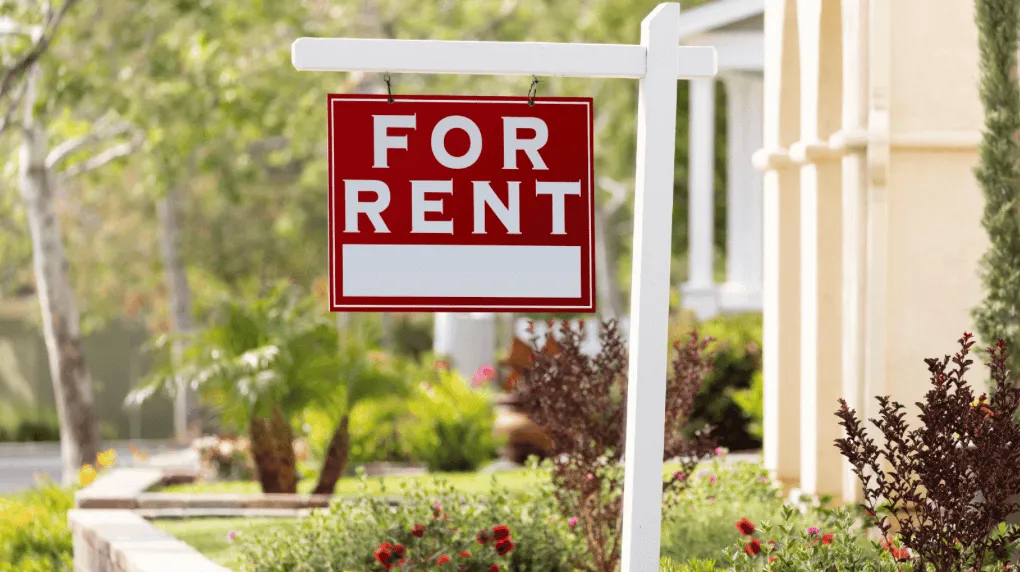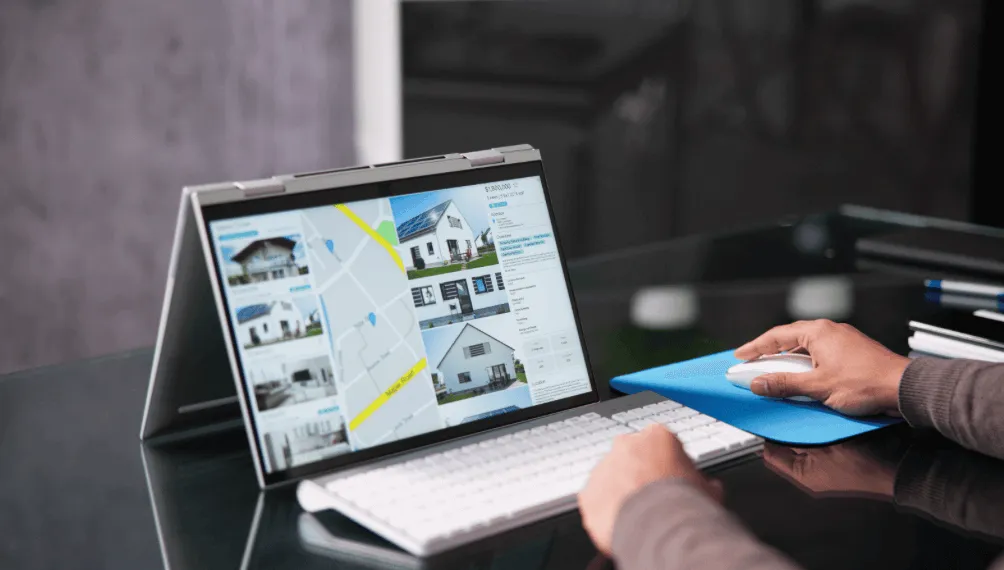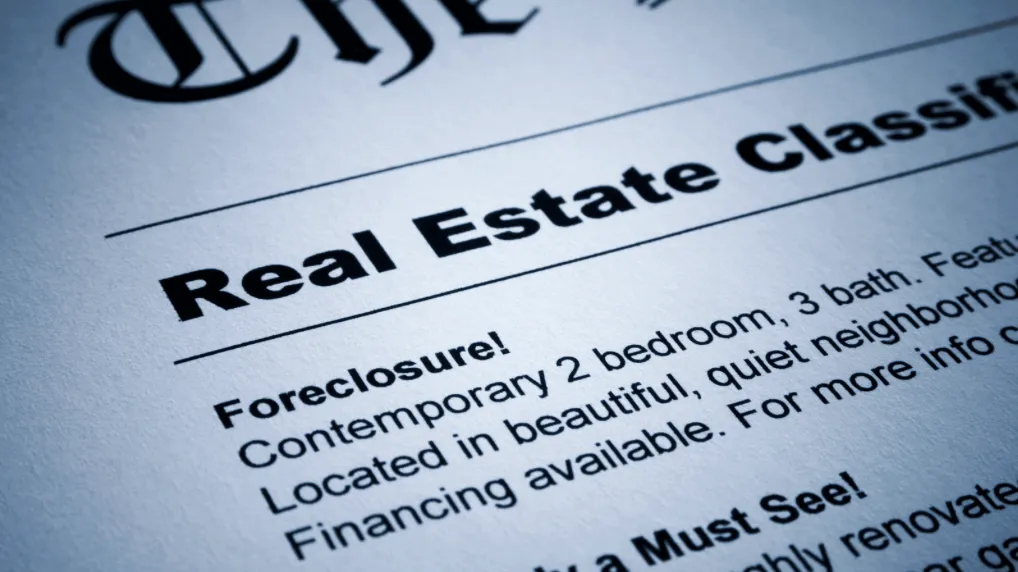Real Estate Advertising | How to do real estate advertising
Learn the best real estate advertising strategies to attract clients and sell properties faster. Effective tips and techniques.
Real estate advertising has significantly evolved over the past few decades. What was once limited to ads in local newspapers and "For Sale" signs has now expanded to encompass a wide range of digital and traditional strategies. In this section, we will explore the meaning of real estate advertising, its importance in the current context, and how it has transformed the way properties are bought and sold.
Real estate advertising refers to all the tactics used to promote properties for sale or rent, as well as services related to the real estate sector. This can include everything from print and digital ads to more complex marketing strategies such as branding campaigns or content marketing. The main objective is to capture the attention of potential buyers and tenants, generating leads that can be converted into transactions.
Importance of Advertising in the Real Estate Sector
The real estate sector is highly competitive. With thousands of properties on the market, standing out requires more than just a good location or price. This is where real estate advertising comes into play, helping agencies and owners differentiate themselves, reach the right audience, and ultimately close sales. In a world where most property searches start online, effective advertising has become an essential component of success in this industry.
Benefits of Real Estate Advertising
Real estate advertising does more than just publicize a property; its impact goes much further. In this section, we will delve into the benefits that a well-executed advertising strategy brings to real estate agents, developers, and owners.
Increases Property Visibility
One of the most obvious benefits of real estate advertising is increased visibility. By using appropriate channels, such as real estate portals and social media, properties can reach a much broader and more specific audience. Visibility refers not only to the number of people who see an ad, but also to the quality of those impressions; that is, reaching those who are genuinely interested in buying or renting.
Generates Qualified Leads
Effective advertising translates into the generation of qualified leads, i.e., people who are not only interested in the property but also have the ability and intention to make a purchase. Through precise segmentation and the use of marketing automation tools, it is possible to attract these leads and guide them through the sales funnel to conversion.
Improves Real Estate Brand Reputation
In addition to selling properties, real estate advertising also helps build and strengthen an agency or developer's brand. A coherent and well-executed campaign positions the brand as a benchmark in the sector, generating trust and loyalty among customers. This type of branding is essential for long-term growth and sustainability in such a competitive market.
How to Create Real Estate Advertising
An effective advertising strategy is multifaceted and adaptive. There is no one-size-fits-all approach, as each property and market has its own particularities. Here we will explore various strategies, both digital and traditional, that can be implemented to maximize the impact of real estate advertising.
Digital Advertising vs. Traditional Advertising
Digital advertising has surpassed traditional in many ways, but both remain relevant. In the video shown below, we compare the advantages and disadvantages of each approach, and discuss how to combine them for the best results. Digital advertising allows for precise targeting and real-time measurement, while traditional advertising still has significant reach in certain demographics and markets.
Content Marketing for the Real Estate Sector
Content marketing is a strategy that focuses on creating and distributing valuable, relevant, and consistent content to attract and retain a clearly defined audience. In the real estate sector, this can include blogs, videos, buying guides, and more. Quality content not only helps attract traffic but also establishes the brand as an authority in the market.
For this, we recommend our free real estate ad generator to create relevant real estate descriptions and improve the advertising of your properties.
Social Media Ads
Social media is a powerful channel for real estate advertising, offering advanced targeting tools that allow you to reach specific audiences with personalized messages. Use platforms like Facebook, Instagram, and LinkedIn to promote real estate properties and services.

Virtual Home Staging
Virtual home staging is a technique used in real estate advertising that consists of creating digital images of professionally decorated and furnished interiors. Unlike traditional home staging, where real furniture and décor are used, virtual home staging employs digital tools to transform empty or outdated spaces into attractive and modern environments. This strategy allows real estate agents and owners to showcase a property's potential, capture the attention of potential buyers, and accelerate the sales process, all without having to physically move a single piece of furniture.
Types of Real Estate Advertising
Real estate advertising encompasses several types, each with its own advantages and specific uses. In this section, we will detail the most common types of advertising used in the real estate sector, providing examples and best practices for each.
Ads on Real Estate Portals
Real estate portals are platforms dedicated specifically to the purchase, sale, and rental of properties. Posting on these portals is essential for any real estate advertising strategy, as they attract millions of users interested in properties.
Not all real estate portals are the same; some are more oriented towards luxury properties, while others are more effective in local markets or for rental properties. When selecting a portal:
- Analyze the audience: Research who the main users of the portal are. Are they looking for luxury properties, family homes, or student apartments? Make sure the user profile matches the property you are advertising.
- Cost and return on investment (ROI): Some portals charge fees for posting ads or featuring properties in the top results. Evaluate whether the cost is justified by the visibility you will gain and if the portal is likely to generate a good return on investment.
- Ease of use and support: Choose a portal that offers an easy-to-use interface and efficient technical support. An intuitive publishing system and quality customer service can save time and avoid frustration.

Search Engine Advertising
Search engine marketing is an effective way to capture the attention of buyers when they are actively searching for properties online. Here, we will focus on how to set up pay-per-click (PPC) campaigns on Google and other search engines, optimizing keywords, ads, and landing pages to attract the right buyers.
- Keyword Selection: Choose keywords that reflect the search intent of buyers. This includes terms like "buy a house in Seville," "apartments for sale," or "houses with a garden." It's important to include both broad keywords and more specific long-tail phrases that attract a more qualified audience.
- Campaign Structure: Organize your campaigns around different ad groups, each targeting a specific set of keywords. This allows for more relevant and personalized ads, which can improve click-through rates (CTR) and reduce cost-per-click (CPC).
- Budget Setting: Set a daily budget that aligns with your goals and resources. It's crucial to start with a modest budget and adjust it based on campaign performance. Google Ads allows you to optimize budget delivery to maximize clicks or conversions.
- Geographic Targeting: Make sure to segment your ads to only show in relevant geographic locations. If you're selling properties in a specific city, it's pointless for your ads to show in regions where you don't operate. Precise geographic targeting helps you maximize the effectiveness of your advertising budget.
Influencer Marketing in the Real Estate Sector
Influencer marketing is an emerging strategy in the real estate sector, where people with a significant audience promote properties or services. This section will analyze how to select suitable influencers, design effective campaigns, and measure results. These examples of successful collaborations will help illustrate the potential of this strategy. The Agency and Luxury Influencers
Description: The Agency, a luxury real estate firm based in Los Angeles, has collaborated with several luxury and lifestyle influencers to promote exclusive properties. One of the most notable cases was the promotion of a Beverly Hills mansion through a video tour by a popular YouTube influencer known for his luxury lifestyle content.
Strategy: The influencer conducted a detailed tour of the property, highlighting unique features such as modern architecture, panoramic views, and high-end amenities. The video was widely shared on social media, reaching millions of views and attracting potential buyers from around the world.
Results: The property received a large number of inquiries and visits thanks to the massive exposure, which accelerated its sale. Engel & Völkers and Local Micro-Influencers
Description: Engel & Völkers, a well-known international real estate company, has implemented collaboration strategies with micro-influencers in different local markets. For example, in Mallorca, they collaborated with local influencers specializing in Mediterranean lifestyle and tourism.
Strategy: Influencers shared content on their social networks that included visits to luxury properties, lifestyle recommendations, and local experiences related to the properties for sale. This local approach helped attract buyers interested in the region's specific culture and lifestyle.
Results: The campaigns not only increased the visibility of the properties but also built an emotional connection with the target audience, resulting in increased inquiries and visits to the properties. Related Group and Instagram Campaigns with Architecture Influencers
Description: Related Group, a high-profile real estate developer in Miami, has collaborated with Instagram influencers known for their focus on architecture and interior design. These influencers were invited to visit and share luxury condominium projects under development.
Strategy: The influencers created visually appealing content showcasing the buildings' architecture, innovative interior designs, and spectacular views. They used project-specific hashtags and tagged the location to increase visibility.
Results: The campaign generated a high level of engagement and helped position Related Group's projects as design icons, attracting both buyers and investors.
Print Media Ads
Although digital advertising has gained ground, print media remains relevant, especially in local markets or for specific audiences. We bring you a series of recommendations to improve your real estate advertising in print media relevant, especially in local markets or for specific audiences. We bring you a series of recommendations to improve your real estate advertising in print media Know Your Audience
Research the Target Audience: Understand who they are, what interests them, and what problems they face. This will help you tailor the message and design to resonate with them. Define the Main Message
Clarity and Conciseness: Your message should be clear and direct. Define the purpose of the ad (inform, persuade, promote an offer) and make sure the message is easy to understand. Design an Attractive Ad
-
Impactful Headline: Use a headline that grabs attention. It should be eye-catching and relevant to your audience.
-
High-Quality Images: Use images that reinforce the message and are visually appealing. Images should be high-resolution and relevant.
-
Call to Action (CTA): Include a clear CTA that tells readers what to do next (call, visit a website, buy). Consider the Media Format
-
Magazines: They generally have a more visual focus. Take advantage of the space for attractive images and creative designs.
-
Newspapers: They tend to be more text-based. Use strong headlines and make sure the text is legible, especially if the ad is in black and white. Use Space Effectively
-
Simplicity: Don't overload the ad with too much information. A clean and focused design is usually more effective.
-
Visual Hierarchy: Use different text sizes and styles to highlight the most important elements (headlines, CTA, etc.). Include Contact Information
Facilitate Contact: Make sure readers can easily contact you, either through a phone number, web address, or physical address.

Real Estate Advertising Best Practices
To ensure the success of an advertising campaign, it is crucial to follow certain best practices that maximize the effectiveness of ads and investment. This section will provide a detailed breakdown of recommended practices for real estate advertising.
Creating Attractive and Effective Ads
A successful ad must capture attention, convey a clear message, and persuade the viewer to take action. Here, we will explore the key elements of an appealing ad, including the use of impactful headlines, persuasive descriptions, and clear calls to action. Best practices for visual design, including images and videos, will also be discussed.
The most important thing for ads is visual optimization. Use virtual home staging to enhance your real estate photos and clearly show the property to the client. The second is a complete description of the property, with all the features and opportunities. For this, you can try our free real estate ad creator.
Once you have the photos and description, you'll have an attractive and complete ad with all the information available for the future tenant.
Audience Segmentation: Who to Target
Segmentation is one of the most critical aspects of effective advertising. Not all properties are suitable for all buyers, so it is essential to target ads to the right audiences. This section will cover how to identify and segment audiences based on factors such as location, demographics, interests, and purchasing behaviors. Segmentation by Location
Objective: Target ads to people interested in properties in specific areas.
- Geographic Area: Define the geographic area your property covers. You can segment by city, neighborhood, zip code, or even nearby areas.
- Search Radii: Use tools that allow you to set search radii around a property to capture people searching in the vicinity.
- New Residents: Target ads to people who have recently moved to a city or area, as they may be looking for a new home or investment.
Example: An ad for a house in a specific area of a city targeting people who have shown interest in that area. Demographic Segmentation
Objective: Ensure the ad reaches people with demographic characteristics that match the ideal buyer profile.
- Age: Depending on the type of property (e.g., family homes vs. apartments for singles), age can be an important factor.
- Income: Segmenting by income range helps you target ads to people who have the necessary purchasing power.
- Marital Status and Family Size: A large family may be interested in multi-bedroom homes, while a young couple might be looking for an apartment.
Example: An ad for a luxury apartment targeting professionals aged 30-50 with high incomes. Interest-Based Segmentation
Objective: Reach people who have interests that match the property's features.
- Related Interests: If a property is near recreational areas, golf courses, or cultural centers, target people who have shown interest in these activities.
- Lifestyle: Advertise properties that match potential buyers' lifestyles, such as properties in nightlife areas for young professionals or homes in quiet neighborhoods for families.
Example: An ad for a property in a gated community with golf courses targeting people interested in golf and a luxurious lifestyle. Segmentation by Purchasing Behavior
Objective: Target people who have demonstrated purchasing behaviors that suggest they are in the market for properties.
- Browsing Behaviors: Use browsing data to identify people who have visited real estate websites or searched for property-related terms.
- Purchase History: If you have access to data about past purchases, target people who have shown interest in similar properties.
- Social Media Engagement: Target ads to people who have interacted with real estate-related posts or pages.
Example: An ad for a new construction targeting people who have visited multiple online real estate development pages in recent months. Psychographic Segmentation
Objective: Capture the attitude, lifestyle, and values of potential buyers.
- Motivations and Aspirations: Understand what motivates buyers (e.g., seeking stability, property investment, lifestyle) and tailor the ad to resonate with those values.
- Housing Preferences: Some people look for homes with specific features such as gardens, smart technology, or modern design.
Example: An ad for an eco-friendly house targeting people interested in sustainability and the environment. Segmentation by Purchase Cycle Stage
Objective: Tailor the message according to the stage of the buying process potential buyers are in.
- Initial Research: Target ads that provide general information about properties and areas.
- Active Consideration: Show ads with specific details about properties, prices, and features.
- Purchase Decision: Offer special promotions, guided tours, or urgent calls to action.
Example: An ad for buyers in the decision stage offering a virtual tour or a special offer.
Using High-Quality Images and Videos
Images and videos are essential components of any real estate ad, as they are the first things potential buyers see. Make sure to select and produce content that highlights the best of each property, leveraging current technologies such as virtual tours and aerial videos, and keeping user experience at the center of your strategy.
Measuring and Analyzing Advertising Performance
You can't improve what you don't measure. Use analytics tools to monitor the performance of advertising campaigns, from generated traffic to final conversions.
Examples in Real Estate Advertising
Learning from real cases can be extremely valuable for those looking to improve their real estate advertising strategy. In this section, we will analyze several examples of successful advertising campaigns, highlighting lessons learned and how they can be applied to other situations.
Examples of Successful Real Estate Advertising Campaigns
Zillow's "Home" Campaign
Description: Zillow, a real estate platform, launched a campaign titled "Home" that emphasized the importance of finding the right home for each individual. The campaign combined television, social media, and online ads to create an emotive narrative centered on the idea of home and community.
Success: The campaign was effective due to its focus on emotions and personal stories of buyers. It used real testimonials and scenarios that resonated with the audience, increasing brand recognition and website visits. "The World's Most Expensive Home" – Real Estate Company London
Description: This campaign promoted a luxury property in London, highlighting its record-breaking price. It used a combination of drone aerial videos, high-quality images, and a narrative emphasizing the property's luxury and exclusivity.
Success: The campaign managed to capture the attention of high-net-worth buyers and international media. The spectacular images and focus on luxury helped position the property in the minds of the target audience. "We Buy Ugly Houses" – HomeVestors
Description: HomeVestors launched a campaign focusing on buying houses in poor condition, using the slogan "We Buy Ugly Houses." The campaign included television, radio, and online ads highlighting the ease of the selling process and the commitment to buying properties in any condition.
Success: The campaign was successful in targeting owners who needed to sell quickly and were willing to accept cash offers. The clear message and simple value proposition helped generate a high volume of leads. "Find Your Happy Place" – Redfin
Description: Redfin, a real estate technology company, launched the "Find Your Happy Place" campaign, which included video and social media ads. The campaign focused on showing how users could find their ideal home using Redfin's search tools.
Success: The campaign stood out for its use of interactive videos and testimonials from satisfied customers. The focus on technology and user experience helped attract young and tech-savvy buyers. "Your Neighborhood Expert" – Coldwell Banker
Description: Coldwell Banker launched a campaign to position its agents as local experts in their respective areas. The campaign included online ads, videos, and content marketing that highlighted agents' in-depth knowledge of neighborhoods.
Success: By focusing on local knowledge and agent expertise, the campaign helped establish trust with buyers and sellers, increasing referrals and recommendations. "Live in the Moment" – Douglas Elliman
Description: Douglas Elliman, one of the leading luxury real estate firms, launched the "Live in the Moment" campaign to promote high-end properties. The campaign used high-quality images and videos to highlight the exclusive lifestyle associated with its properties.
Success: The combination of visually appealing content and a focus on lifestyle helped attract luxury buyers and generated a high level of engagement on social media and digital platforms. "House Hunters" – HGTV
Description: Although it's a television show and not a traditional advertising campaign, HGTV's "House Hunters" has been an effective marketing strategy for the real estate industry. The show features home buyers visiting multiple properties before making a decision.
Success: The show has helped increase awareness about the home buying process and provided a platform to showcase properties to a wide audience. Properties featured on the show often receive a significant increase in interest and views. "The Maimon Group's Virtual Tours" – Real Estate Agency
Description: The Maimon Group, a real estate agency, implemented a campaign focused on immersive virtual property tours. They used virtual reality technology and 360-degree videos to allow buyers to explore properties from the comfort of their homes.
Success: The campaign was successful in offering an interactive experience that facilitated property visualization remotely. This resulted in an increase in inquiries and in-person property visits. "The Virtual Open House" – Compass
Description: Compass launched a series of virtual "Open House" events to promote properties for sale during the pandemic. Agents conducted live tours of the properties, answering viewers' questions in real-time.
Success: The campaign was effective in maintaining buyer interest during times when in-person visits were limited. The live events created a sense of urgency and exclusivity, increasing participation and offers. "Live the Dream" – Sotheby's International Realty
Description: Sotheby's International Realty launched a global campaign called "Live the Dream" that featured luxury properties in exclusive locations. The campaign included a series of high-quality videos and print ads in luxury magazines.
Success: The campaign was effective in attracting international buyers interested in high-profile properties. The focus on luxury lifestyle and quality content helped generate significant interest in the promoted properties.
Current Trends in Real Estate Advertising
The world of advertising is constantly evolving, and staying up-to-date with the latest trends is crucial for success in the real estate sector. In this section, we will explore the emerging trends shaping real estate advertising today.
Programmatic Advertising in the Real Estate Sector
Programmatic advertising is a media buying methodology that automates the ad buying and placement process across digital platforms, using data and algorithms to optimize campaign performance. In the real estate context, this translates into the ability to reach the right audience with the right message at the right time. How It Works
-
Data and Algorithms: Uses user behavior data, demographics, location, and more to determine which audience is most likely to be interested in a specific property. Algorithms then optimize ad placement in real-time to maximize return on investment.
-
Demand-Side Platform (DSP): Agencies use DSP platforms to buy ad space on different websites and applications, ensuring that ads are shown to users who meet certain predefined criteria.
-
Real-Time Bidding (RTB): In a real-time auction, ad space is bid on based on user relevance and potential conversion value. This ensures that ads are placed efficiently and effectively. Benefits:
-
Precise Targeting: Allows reaching very specific audiences based on demographic, behavioral, and interest data.
-
Real-Time Optimization: Algorithms automatically adjust campaigns to maximize impact and return on investment.
-
Cost Efficiency: Reduces costs by avoiding the purchase of irrelevant ad space and ensures that the budget is spent on the most promising segments. Usage Examples:
-
Retargeting Campaigns: Show property ads to users who previously visited an agency's website but did not perform a conversion action.
-
Dynamic Ads: Create personalized ads that show properties similar to those users have explored in the past. How to Leverage It:
-
Implement Analytics Tools: Use data analytics tools to identify patterns and behaviors that can inform the programmatic buying strategy.
-
A/B Testing: Conduct A/B tests to compare different ad approaches and adjust strategies based on results.
Virtual and Augmented Reality in Property Promotion
Virtual reality (VR) and augmented reality (AR) are transforming the way potential buyers interact with properties. These technologies allow for immersive visual experiences and interactive manipulations that were not possible before. Virtual Reality (VR):
-
Virtual Tours: Virtual tours allow buyers to explore a property in 3D as if they were there in person. This is especially useful for buyers who are in remote geographic locations or for luxury properties that want to showcase their unique design and features.
-
Space Simulation: Buyers can experience the feel of the space, flow, and layout of the property immersively, making decision-making easier. Augmented Reality (AR):
-
Floorplan Visualization: AR allows buyers to see how furniture and other elements would look in a space through mobile apps or AR devices. This helps visualize how their belongings will fit in the new property.
-
Interaction with Design Elements: Users can interact with design elements, such as changes in finishes, wall colors, and furniture layout in real-time. How to Leverage It:
-
Develop VR and AR Content: Invest in creating virtual tours and AR applications that facilitate an immersive and detailed experience.
-
Integrate with Marketing Strategies: Use VR and AR in digital marketing campaigns and on websites to attract potential buyers and differentiate the offering.
Using Big Data for Audience Segmentation
Big Data refers to the use of large volumes of data to gain insights and patterns that can inform business decisions. In the real estate sector, Big Data allows for more precise and personalized segmentation, improving the effectiveness of advertising campaigns. How It Works
-
Data Collection: Collects data from various sources, such as online searches, social media, past transactions, and demographic data.
-
Predictive Analytics: Uses predictive analytics techniques to identify patterns and predict future buyer behaviors.
-
Advanced Segmentation: Allows for the creation of detailed customer profiles and highly precise audience segmentation, tailoring messages and offers for different groups. Benefits:
-
Personalization of Offers: Allows for the personalization of offers and messages for different audience segments, increasing relevance and conversion rate.
-
Resource Optimization: Facilitates the efficient allocation of advertising resources by identifying the audiences most likely to respond to campaigns.
-
Improved User Experience: Offers a more tailored and relevant user experience by adapting messages and offers to each segment's specific needs. Current Applications:
-
Customer Segmentation: Create customer segments based on browsing and search behaviors to target personalized ads.
-
Market Trend Analysis: Use data to identify emerging trends in the real estate market and adjust marketing strategies accordingly. How to Leverage It:
-
Invest in Data Technology: Implement Big Data tools and platforms that enable effective data collection, analysis, and utilization.
-
Develop Detailed Customer Profiles: Use data to create detailed customer profiles and target advertising campaigns to specific segments with a high probability of conversion.
Common Mistakes in Real Estate Advertising
Even with the best intentions, it's easy to make mistakes in real estate advertising that can reduce a campaign's effectiveness. In this section, we will identify and explain some of the most common mistakes, along with strategies to avoid them.
Mistakes in Audience Segmentation
- Superficial Demographic Segmentation: Basing segmentation solely on basic demographic data such as age, gender, or location, without considering additional factors like purchasing behavior or specific interests. This can lead to a generic audience that is not truly interested in the property.
- Lack of Behavioral Data: Ignoring behavioral data, such as online searches, website visits, or social media interactions. These data offer more accurate insights into potential buyers' interests and needs.
- Not Updating Segmentation: Using audience segments that are not updated regularly. Consumer preferences and behaviors change over time, so it's crucial to adjust segments to reflect current market trends.
- Oversaturated Audiences: Sending ads to an audience that is too broad or not properly filtered, which can result in a high rejection rate and waste of advertising resources.
Lack of Differentiation in Advertising Messages
- Generic Messages: Using advertising messages that don't stand out and resemble those of competitors. This can cause the campaign to get lost in the crowd and fail to capture the audience's interest.
- Lack of Unique Value Proposition: Not highlighting the unique features and specific benefits of the property. Buyers need to understand what makes a property special compared to other options on the market.
- Inadequate Adaptation to Target Audience: Not adapting messages to the specific needs and desires of different audience segments. A message that resonates with one group may not be relevant to another.

In summary, real estate advertising is evolving with the incorporation of various tools and strategies to improve property presentation. From high-resolution photography to virtual tours, agents are adopting innovative methods to capture the attention of potential buyers. Remember, you can try our virtual home staging tool for free to enhance your real estate advertising, and if you have any questions, you can contact us at Pedra .

Related Posts
3D Photography for Real Estate Guide
Explore our guide to 3D photography for real estate. Learn how immersive virtual tours can attract q...
Effective Copywriting for Real Estate to Sell Homes Fast
Discover expert copywriting for real estate that boosts property sales. Learn tips to craft compelli...
Top Floor Plan Creator Software of 2025 | Design with Ease
Explore the best floor plan creator software of 2025. Find intuitive tools and powerful features to ...